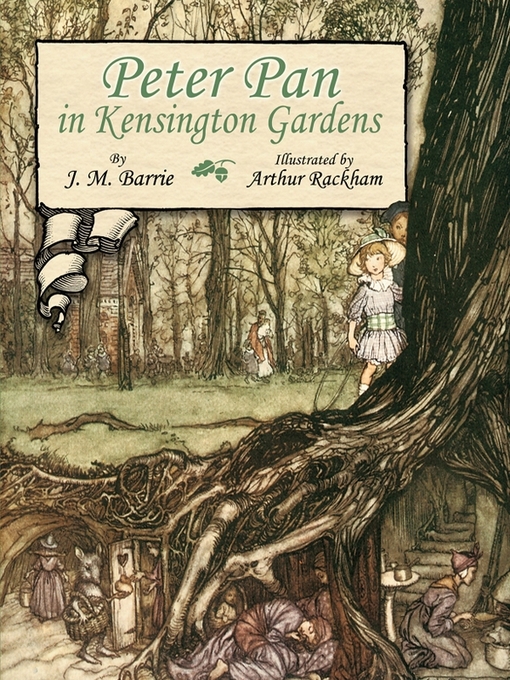 Cover of 1915 edition of J. M. Barrie’s novel, first published in 1911, illustrated by F. D. Bedford
Cover of 1915 edition of J. M. Barrie’s novel, first published in 1911, illustrated by F. D. Bedford
 Illustration of Peter Pan playing the pipes, by F. D. Bedford from Peter and Wendy (1911)
Illustration of Peter Pan playing the pipes, by F. D. Bedford from Peter and Wendy (1911)
Peter Pan is a character created by Scottish novelist and playwright J. M. Barrie. A mischievous boy who can fly and never grows up, Peter Pan spends his never-ending childhood having adventures on the small island of Neverland as the leader of his gang, the Lost Boys, interacting with mermaids, Native Americans, fairies, pirates, and occasionally ordinary children from the world outside Neverland. In addition to two distinct works by Barrie, the character has been featured in a variety of media and merchandise, both adapting and expanding on Barrie’s works. These include an animated film, a dramatic film, a TV series and other works.
J.M. Barrie created his character based on his older brother, David, who died in an ice-skating accident the day before he would have turned 14. His mother and brother thought of him always as a boy. The “boy who wouldn’t grow up” character has been described as a variety of ages. It is also based on Pan, the Greek deity.
J. M. Barrie first used Peter Pan as a character in a section of The Little White Bird (1902), an adult novel.
He returned to that character as the center of his stage play entitled Peter Pan, or The Boy Who Wouldn’t Grow Up, which premiered on 27 December 1904 in London. The play was highly popular, running to 1913.
 Following the success of the 1904 play, Barrie’s publishers, Hodder and Stoughton, extracted chapters 13–18 of The Little White Bird and republished them in 1906 under the title Peter Pan in Kensington Gardens, with the addition of illustrations by Arthur Rackham. Barrie adapted and expanded the play’s story line as a novel, published in 1911 as Peter and Wendy
Following the success of the 1904 play, Barrie’s publishers, Hodder and Stoughton, extracted chapters 13–18 of The Little White Bird and republished them in 1906 under the title Peter Pan in Kensington Gardens, with the addition of illustrations by Arthur Rackham. Barrie adapted and expanded the play’s story line as a novel, published in 1911 as Peter and Wendy
 Peter Pan ( Herbert Brenon, 1924). Silent film released by Paramount Pictures, the first film adaptation of the play by J. M. Barrie, starring Betty Bronson as Peter
Peter Pan ( Herbert Brenon, 1924). Silent film released by Paramount Pictures, the first film adaptation of the play by J. M. Barrie, starring Betty Bronson as Peter
 Peter Pan (Clyde Geronimi, Wilfred Jackson, and Hamilton Luske, 1953), the American animated fantasy-adventure film produced by Walt Disney. A sequel titled Return to Never Land was released in 2002
Peter Pan (Clyde Geronimi, Wilfred Jackson, and Hamilton Luske, 1953), the American animated fantasy-adventure film produced by Walt Disney. A sequel titled Return to Never Land was released in 2002
 Hook (Steven Spielberg, 1991), live-action sequel starring Robin Williams as the adult Peter Banning, Dustin Hoffman as Hook and Julia Roberts as Tinker Bell
Hook (Steven Spielberg, 1991), live-action sequel starring Robin Williams as the adult Peter Banning, Dustin Hoffman as Hook and Julia Roberts as Tinker Bell





